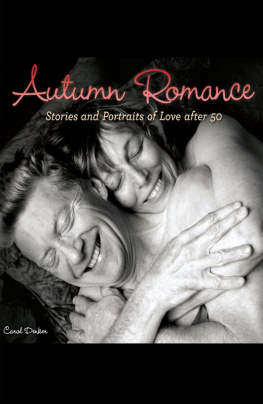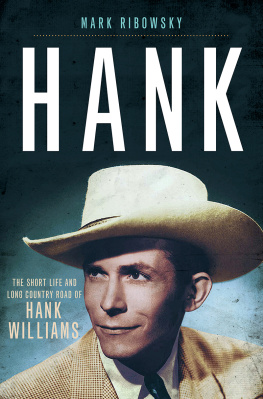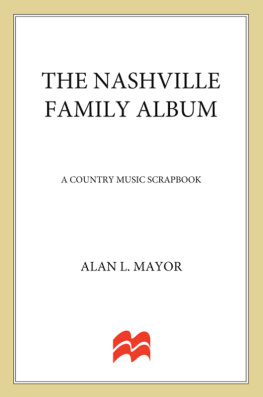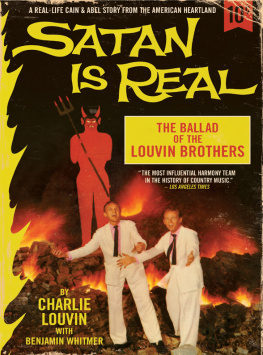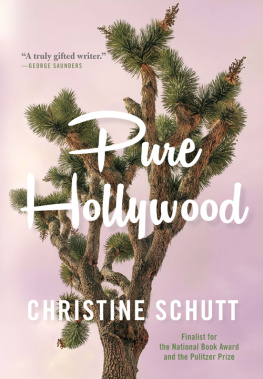Copyright 2008 by The Grand Ole Opry, Gaylord Entertainment
All rights reserved. Except as permitted under the U.S. Copyright Act of 1976, no part of this publication may be reproduced, distributed, or transmitted in any form or by any means, or stored in a database or retrieval system, without the prior written permission of the publisher.
Center Street
Hachette Book Group
237 Park Avenue
New York, NY 10017
Visit our Web site at www.HachetteBookGroup.com.
The Center Street name and logo are trademarks of Hachette Book Group, Inc.
First eBook Edition: October 2008
ISBN: 978-1-599951-84-3
ALSO BY THE GRAND OLE OPRY:
The Grand Ole Opry: The Making of an American Icon
Around the Opry Table: A Feast of Recipes and Stories from the Grand Ole Opry
AVAILABLE FROM CENTER STREET WHEREVER BOOKS ARE SOLD.
The Grand Ole Opry has always had that special something that separates it from every other form of American entertainment: its people.
This book is dedicated to the dreamers who, for going on a century, have made their way to the Opry stage, aspiring to lend their voices to the Oprys song. Country musics home has been built upon their dreams, their performances, and their undying commitment.
This book is dedicated as well to those in the pews, cars, and living rooms around the world who have dropped by or tuned in over that same course of time, sharing in the Opry dream while laughing and clapping along.
Indeed, the Opry is set apart by its people. Good people.
AUTHORS DEDICATION
To my wife, Mary Bufwack, who is as big a
Grand Ole Opry fan as I am.
Johnny and June
T he Cash family moved to County Road 3, Box 238, in Dyess, Arkansas Mississippi County in March 1935. Not long afterward, the family acquired its first battery-powered radio. Musical shows beamed from big cities like Memphis, Chicago, Cincinnati, and Nashville fascinated son Johnnythen known simply as J. R.as did the radio dramas, serials, and comedies. Radio was theater of the mind, he would later recall.
I scanned the radio dial when I was a little kid on the cotton farm in Arkansas, he once said. And it was the most wonderful, magical thing in the world to be able to turn that dial and hear different singers in different places.
He vividly remembered how exciting Nashvilles Grand Ole Opry broadcast over WSM sounded to him. At the time, its brightest stars included banjo-whacking Uncle Dave Macon, fiddle virtuoso Arthur Smith, the close-harmony team of The Delmore Brothers, Pee Wee Kings uptown Golden West Cowboys band, and the shows newest sensation, mountain singer Roy Acuff.
In 1938, when J. R. was six years old, the set began to pick up the sounds of The Carter Family broadcasting over XERA, one of the superpowerful Mexican-border stations. Country musics founding family was from the mountains of Virginia and consisted of A. P. Carter, his wife Sara, who sang lead and played the autoharp, and sister-in-law Maybelle, who sang the tenor harmony and played lead guitar and was married to A. P.s brother Ezra. If the sprit moved him, A. P. would chime in with a baritone vocal.
The familys repertoire would become country musics bedrock. Keep on the Sunny Side, Will the Circle Be Unbroken, Wabash Cannonball, Hello Stranger, Are You Lonesome Tonight, I Never Will Marry, and Wildwood Flower were all popularized by the trio. Its Im Thinking Tonight of My Blue Eyes became the melody for three future country classics, The Great Speckled Bird, The Wild Side of Life, and It Wasnt God Who Made Honky Tonk Angels.
But little Johnny Cash knew only that those songs gripped him. For the rest of his life, he would turn to the Carter repertoire for inspiration.
The simplicity of deliverance and the performance in those songs was like my life, you know? Things were pretty cut and dried, black and white, straight ahead. Thats the way The Carter Family came at you, right in the face. And it felt good. I loved that kind of music all my life. That kind of music has always been my cup of tea.
MAYBELLE AND EZRA CARTER brought their three daughtersHelen, June, and Anitato the Mexican border in 1939. Sara and A. P. brought their children Janette and Joe. The kids were expected to stand on their own, musically. Anita and Janette were the best singers. Helen and Joe were the best guitarists. But ten-year-old tomboy Valerie June Carter didnt measure up in either department.
Well, the Mexican border stations would have been an adventure for anybody, June reflected years later. It was for me. Im a simple little girl that has always lived in the mountains of southwestern Virginia. Mother Maybelle, Uncle A. P., and Aunt Sara were very active on border radio. And then they offered us a job, if any of the children could sing. So my mother came home and within about a weeks time, I think, taught me to sing. Because I had no idea how to sing.
Janette could sing. Helen and Anita could sing. I mean, they had kind of perfect pitch at the time. And Im the one theyre looking at like Im a snake, like they dont know whether I could sing or not. But I did learn to play the autoharp, and I could play the tenor guitar. And so we went, as these little children.
Even at seventy, June Carter could remember the commercials she wrote and recited for Kolorbak hair dye, Peruna tonic, and the other products she sold over the airwaves. The sister trio sang tunes like Beautiful Brown Eyes and Chime Bells, while Junes solo repertoire included such sprightly fare as Stephen Fosters Oh Susannah or an autoharp instrumental on Engine 143. She also became a skillful comic.
Uncle A. P. was the one who encouraged me. He would say, Well, we could use a little comedy. You need to do some kind of joke. June also recalled being shocked at the size of her listening audience on XERA.
The room was full of bushel baskets of mail, and I thought, These are an awful lot of letters somebodys got to answer. And I looked, and they were all to The Carter Family!
Johnny Cash was listening intently. So were the children who became Buck Owens, Waylon Jennings, and Tom T. Hall.
But the homey family those boys were hearing wasnt real. Sara had left A. P. in 1933, divorced him in 1936, and married his cousin Coy Bayes in 1939. Although the couple continued to record and broadcast together, this strained situation would eventually tear the group apart. After the 1940 season on the Mexican border station, the group traveled to broadcast over WBT in Charlotte, North Carolina.
We were working there live every morning, and it was kind of a strained situation, June remembered. My Uncle A. P. and Aunt Sara had been divorced, and Aunt Sara had remarried. And I think it was maybe painful for both of them.
So we came back to the Valley for just a little bit [in 1943]. My father bought Helen an accordion. I kept playing autoharp. For my sister Anita he bought a big bass fiddle. Mother was playing guitar. And we decided, well, we would just continue on and see if we could do our own radio program.
Mother Maybelle & The Carter Sisters were hired by station WRNL in Roanoke, Virginia, in 1944. Two years later, they graduated to the cast of the Old Dominion Barn Dance on the same citys WRVA. In 1948, they moved to Knoxville for work on WNOX. There, they picked up guitarist Chet Atkins as a sideman.
My father said, Hes absolutely gonna be the best guitar player thats ever been. So we had a voteMother, Helen, Anita, and Daddy and Iand we voted to ask Chet if he would come to be a part of our group. So we hired Chet Atkins.


